<Report from overseas office> [Indonesia: World Residence Tour]Kitchen in Indonesia (Jakarta)
- Release date: Aug 05, 2021
- 6777 Views
First.
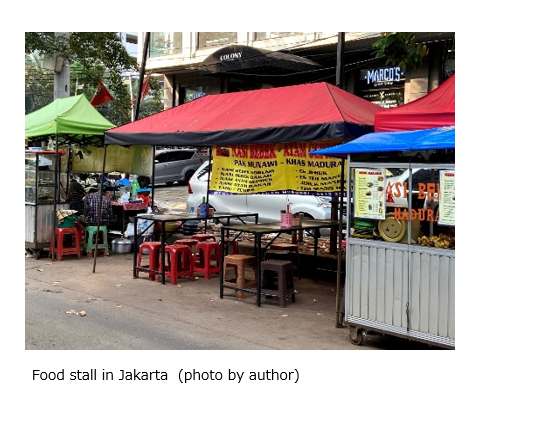
Like Japan, rice is the staple food in Indonesia, and each region has its own unique cuisine. The most famous Indonesian dishes are nasi goreng and satay, but Javanese cuisine, mainly from Java, is characterized by sweet and spicy flavors. On the other hand, Padang cuisine, which is mainly from West Sumatra, mainly consists of stewed dishes with spices.
When walking around Jakarta, I often see people eating at food stalls. Since the restriction of activities due to the spread of coronavirus (PPKM), the number of people using restaurants and food stalls has been decreasing, but on the other hand, the scene of Gojek drivers in green jumpers carrying take-out from restaurants has completely become a part of the city scenery. At the entrance of the apartment building where I live, there are always three to four drivers waiting for residents to deliver their takeout food. So how do people eat at home? I would like to introduce some of the features of the kitchens of households in each socioeconomic class (SEC).
SEC A (Socioeconomic Class A)

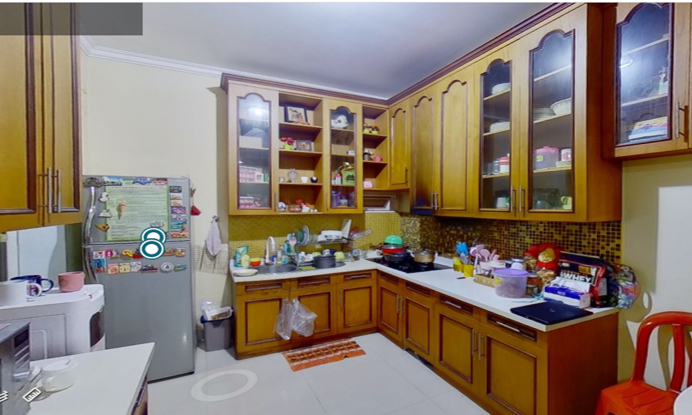
(Photo source: Seikatsu-sha DatabaseConsumer Life Panorama)
(For an overview of Consumer Life Panorama here)
(For an overview of Consumer Life Panorama here)
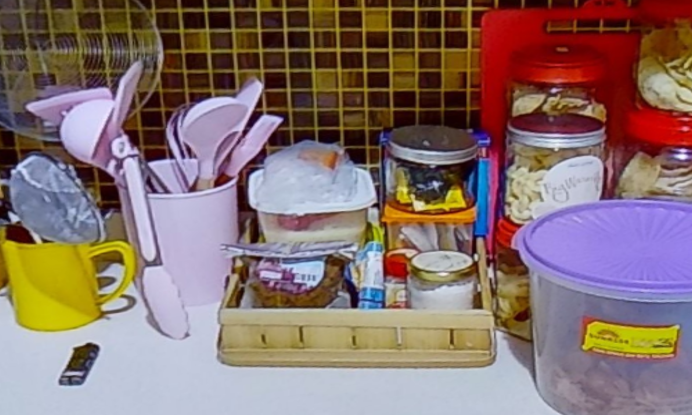
(Photo source: Seikatsu-sha DatabaseConsumer Life Panorama)
(For an overview of Consumer Life Panorama here)
(photo above) The seasonings are stored both refrigerated and at room temperature, and can be used in Asian cuisines other than Western and Indonesian. The seasonings are mainly salt and sugar, and there are few instant seasonings.(For an overview of Consumer Life Panorama here)
Several kinds of "krupuk" (shrimp crisps), used as a garnish for dishes, are always available in containers (The bottle on the far right in the photo above).
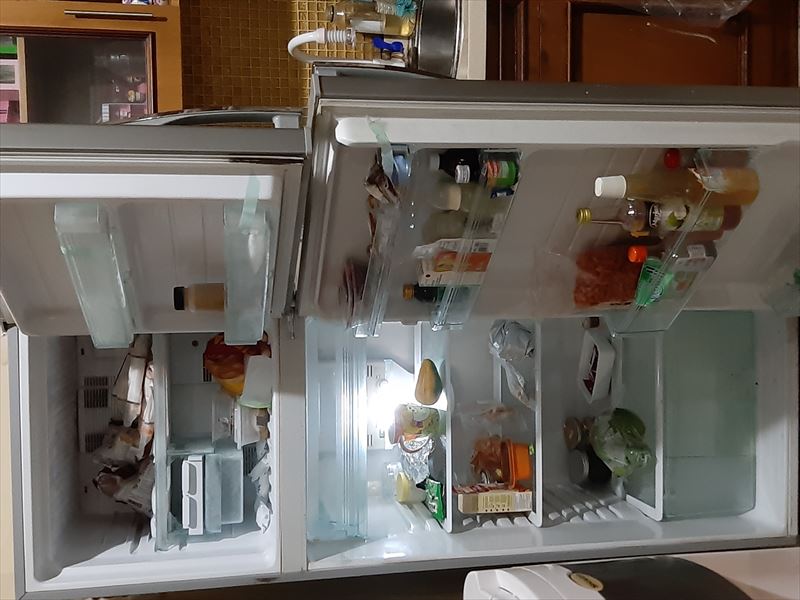
(Photo source: Seikatsu-sha DatabaseConsumer Life Panorama)
(For an overview of Consumer Life Panorama here)
(photo above) The refrigerator holds seasonings and fruits, but there is still space inside. There are few cases where food is left over or leftovers are eaten the next day, and the mother shows off her skills at every meal. The maids do all the housework except for cooking, which gives the mother more time to concentrate on childcare and cooking. (For an overview of Consumer Life Panorama here)
SEC B (Socioeconomic Class B)

(Photo source: Seikatsu-sha DatabaseConsumer Life Panorama)
(For an overview of Consumer Life Panorama here)
Rather than enjoying cooking at home, this B-class family has a strong desire to enjoy eating out. Since there is no maid, the mother does all the housework and is busy with work, so it seems she is battling against time every day.(For an overview of Consumer Life Panorama here)
Compared to Class A, the kitchen space is limited, but it has all the appliances and equipment necessary for cooking, including a gas stove, sink, refrigerator, water server, and rice cooker, and she does not feel inconvenienced at all. The cupboard space is limited, but pots and buckets are kept organized by using the space on the shelves.
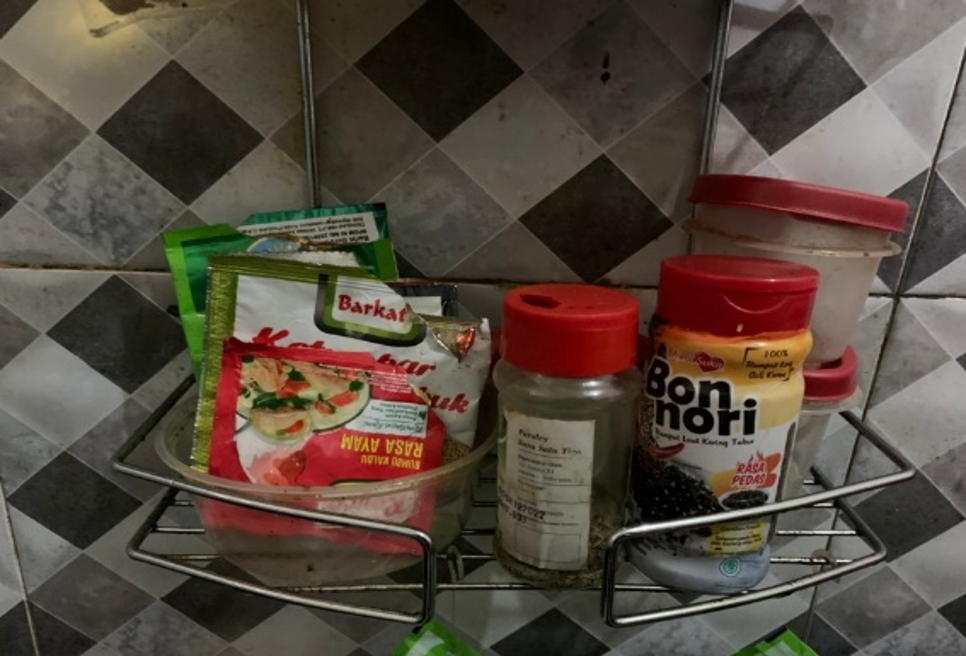
(Photo source: Seikatsu-sha DatabaseConsumer Life Panorama)
(For an overview of Consumer Life Panorama here)
(Top photo) Seasonings for Asian cuisines, including Indonesian, are lined up, including some instant seasonings to shorten time.(For an overview of Consumer Life Panorama here)
They don't seem to take the time to prepare elaborate dishes, and when they cook for themselves, they want to make it as quick as possible.
SEC C (Socioeconomic Class C)

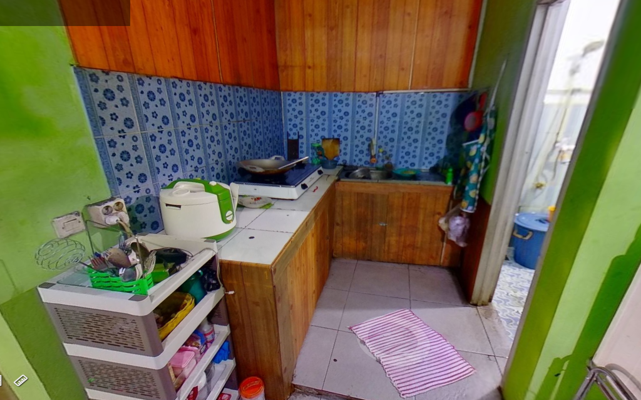
(Photo source: Seikatsu-sha DatabaseConsumer Life Panorama)
(For an overview of Consumer Life Panorama here)
(For an overview of Consumer Life Panorama here)
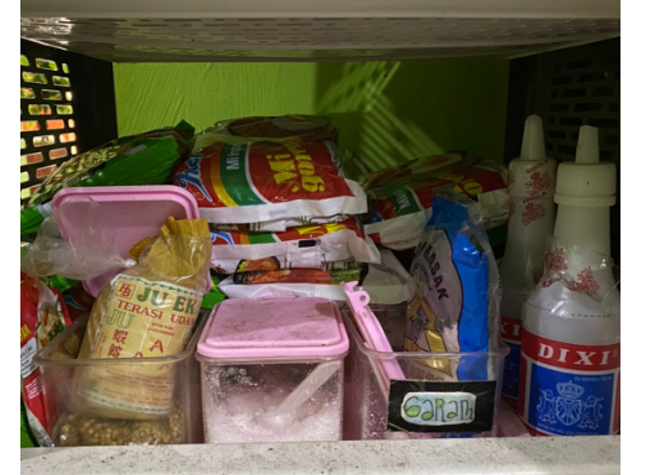
This class C family has a strong faith in Islam and little interest in the West or the rest of Asia. The mother's hobbies are cooking and cleaning, but since she has to do all the housework and childcare by herself, she has limited time to spend on cooking.
Finally
The seasonings used vary depending on the socioeconomic class as well as whether or not they have a maid, how much time they can spend on cooking, and their interest in the cuisine of their own country or other countries.Class A has the impression that they use carefully selected seasonings because they have more economic and time resources and can spend more time on cooking. Class B and C do not have the luxury of time like Class A and are always pressed for time. Class B is conscious of cutting back on time by eating out or getting take-out, while Class C is conscious of cutting back on time and cooks for the family due to economic circumstances.
One thing that all economic classes have in common is that they eat breakfast together as a family at home. Many of the breakfast dishes are simple, such as cereals and fruits, but it seems that spending the beginning of the day with the family is more important than the food itself.
It is said that the number of wealthy and middle class people in Indonesia will double in the next 10 years. It will be interesting to see how the current B and C class people will change their awareness and habits regarding cooking.
Introduction of Consumer Life Panorama
Consumer Life Panorama is a web-based database from Intage that allows you to see the real living conditions of consumers in Japan and overseas. You can view 360-degree images of the living environments of consumers in various countries, and see their daily routines, flow lines, and digital lives.Some of the photos in this article are taken from the database. This service can be used when you want to observe the living environment of overseas consumers at hand, without the need for customized surveys.
The Consumer Life Panorama demo site can be found here
For an overview of Consumer Life Panorama here
-

Author profile
(Ms.) Sumire Shibasaki
Senior Research Manager, Intage Indonesia
After 8 years in charge of domestic research at the Intage Group, she worked in the department that oversees overseas research as outbound research from Japan and the business of overseas subsidiaries. She has been in charge of more than 20 countries so far.
She had planned to make her long-awaited debut as an expatriate in 2020, but it was postponed due to the impact of the coronavirus. For about a year, she was in charge of research in Indonesia as a remote expatriate from Japan, and finally just arrived in Indonesia in May 2021. -

Editor profile
(Ms.) Risa Takahama
 Global Market Surfer
Global Market Surfer CLP
CLP